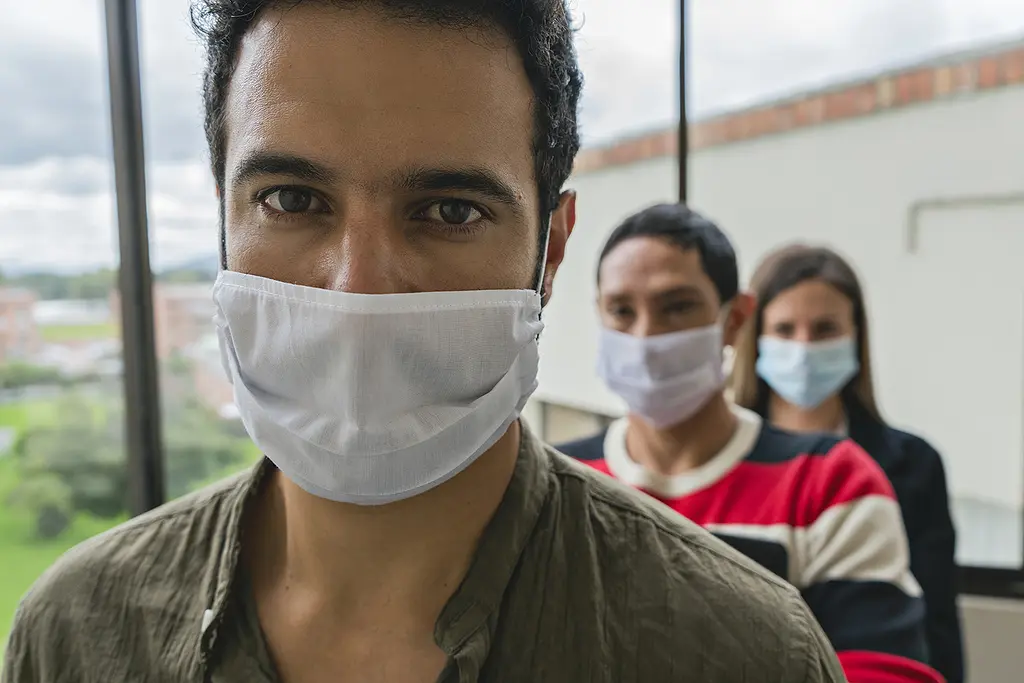
COVID-19, the novel coronavirus, has hit some communities harder than others. By mid-March, COVID-19 had swept across the United States, dominating headlines. Many states entered a lockdown. Some of us had difficulty adjusting to working from home and standing in line to shop at grocery stores with barren shelves. For others, the effects were severe and life-altering. Affluent communities have been able to weather the storm, while racial and ethnic minorities have felt the disproportionate effects reverberate through their communities.
According to a study by the U.S. Centers for Disease Control, about 33 percent of people hospitalized with COVID-19 in selected communities in March were black; African Americans make up 18 percent of the populations studied. In New York City, the death rates from COVID-19 were 35 per 100,000 among Asians, 45 per 100,000 among Whites, 74 per 100,000 among Hispanics, and 92 per 100,000 among African Americans. Tribal communities have also been heavily affected, particularly the Navajo Nation, although reliable data are not yet available on true rates among Native people.
Many health experts attribute racial and ethnic disparities in mortality rates to the rates of underlying medical conditions, including heart disease and diabetes. These conditions are key risk factors for severe illness from COVID-19 and are more common in Hispanics, African Americans, and Native Americans. According to one analysis, about 20 percent of all US adults under 65 are susceptible to severe COVID-19 illness because of underlying health conditions. In contrast, 34 percent of Native Americans and 27 percent of African Americans ages 18-65 are at a higher risk of severe illness from COVID-19 due to underlying health conditions. Further compounding the disparity, minority populations often have multiple risk factors, putting them at even higher risk for a serious case of COVID-19.
The COVID-19 pandemic has heightened awareness about the types of jobs more often held by minority populations in the American labor force. Rachel Banks, Multnomah County Public Health Director comments, “You have more people of color in essential fields that have more exposure, that are going to work in fields where there’s less physical distancing, less access to hand-washing, you have less ability to telework.” Moreover, Michelle Bachelet, the UN High Commissioner for Human Rights stated, “Urgent steps need to be taken by States, such as prioritizing health monitoring and testing, increasing access to healthcare, and providing targeted information for these communities.”
Social determinants of health are the “conditions in the places where people live, learn, work and play.” Social and economic factors are at the root of the inequities between minority populations and Whites – including marginalization, access to healthcare, overcrowded housing, and environmental risks. Additionally, relying on technology for virtual learning due to school closures has disproportionately affected lower-income children, who are often from racial and ethnic minorities. Mortality rates among racial and ethnic minorities are sobering, but will they be the shock that will shape policy to reflect the fact where we live and our socioeconomic status affect population health?
The U.S. is facing unprecedented challenges – a reignited fight for justice in the midst of a pandemic. As the 2020 presidential election draws near, an important question lingers: How will policies be created and/or amended to address the inequalities faced by racial and ethnic minorities? In early May, the U.S. Department of Health and Human Services’ Office of Minority Health announced a three-year initiative that aims to mitigate the disproportionate effects of COVID-19 on racial and ethnic minority populations by developing and coordinating national and state networks. Reducing COVID-19 inequities among vulnerable populations will depend, in part, on comprehensive and effective legislation that ensures everyone’s life and health is protected. Similarly, comprehensive analysis and policy stem from thoughtful reflection – a positive, imperative, yet feasible step that will guide researchers, policymakers, and funders to mitigate racial disparities caused by COVID-19.
